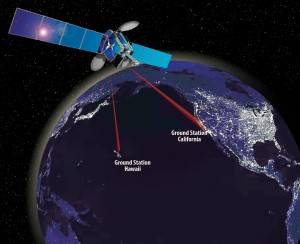LCRD or LaserCom: Communicate Across The Galaxy
Want to watch live video feeds of distant planets? It’s not too far away.
Radio communication throughout space has served us well, but with increasing demands on the quantity and promptness of data sent, something new is overdue. That’s where Laser Communication Relay Demonstration (LCRD or LaserCom) comes into play.
LCRD is a new technology that will revolutionize the way we connect throughout the Milky Way. With LaserCom, pretty much any type of data you can think of can be encoded into an invisible, short wavelength laser beam, and transmitted at speeds up to 100 times faster than traditional radio waves.
The short wavelength lasers utilize less energy while losing less information during transmission. LaserCom is invisible to the human eye (nearly infrared), and the transmission hardware necessary will greatly decrease in mass vs. radio. Not only that, the power demands required for transmission will dramatically shrink.
LaserCom technology opens up a bevy of possibilities both near Earth, and beyond. The most incredible feature of Laser Communications Relay Demonstration technology is that it will enable us to basically monitor distant planets live! LCRD would allow solar weather tracking in much the same way we monitor Mother Nature on Earth today! With LCRD, high resolution video, information, and planetary measurements can be beamed across the solar system in no time flat.
A preliminary technology review is scheduled for next year, and the first LaserCom enabled satellite is scheduled to be launched via a commercial spacecraft in either 2016 or 2017.
The plan for that mission is to study different data encoding techniques and perfect information tracking systems. Scientists also aim to study the effects of Earthly disruptions such as weather on LCRD and perfect the transmission techniques. Just a few years after that launch, NASA’s telecommunications relay system could be entirely replaced with the new advanced hardware.
In the future, who knows, our kids might just be listening to music on the laser.
Comments
Tags: laser com, Laser Communications Relay Demonstration, lasercom, LCRD, telecommunications relay system
Trackback from your site.

